I heard someone say that the Central Mine is always a productive place to hunt and I believe it. Everyone seemed to go away happy. At noon it was time to move on to my next destination, the Iroquois Mine not too far south from the Central.
The Iroquois Mine dump piles lie at the end of a gated two track road that winds through the woods. At the end the woods open up to reveal some good sized rock piles.
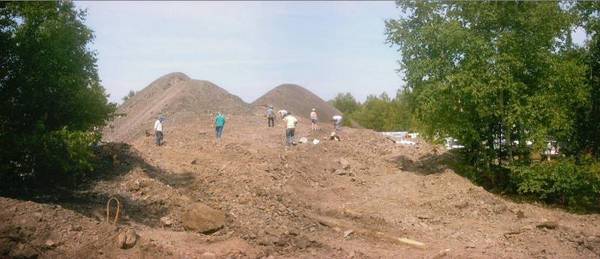
We were told about the possibility of finding Datolite here, but the only person I heard of finding any was one of our guides who happened to be walking the piles. She found a walnut sized nodule with a white interior and a few chips off one side. Still, it was a good find. It was another hot afternoon and I spent most of it digging in the shade of the tree on the left in the above photo. I did find some Copper there including this delicate little piece.
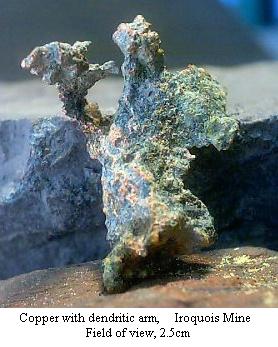
It's a wonder something like that can stay intact in a pile of rocks being pushed around by bulldozers. Shortly after 3:00 I was ready to quit, so I returned to McLain State Park to sort and pack the day's finds. After a short rest, it was time for the Quincy Mine Rock Swap and Sale.
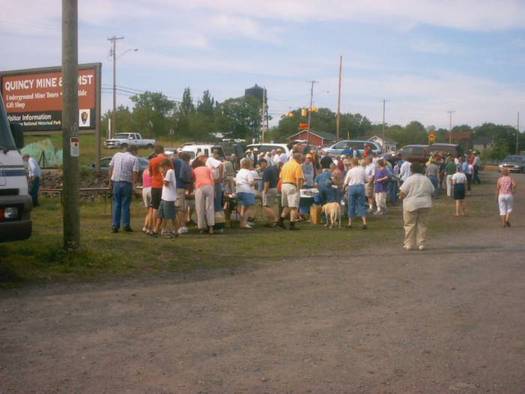
This was my first experience with a rock sale in the Keweenaw, and there were some great local minerals including large pieces of native Copper, and lots of Datolite to choose from.
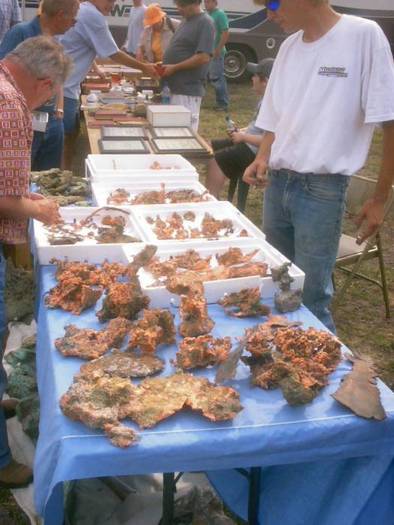
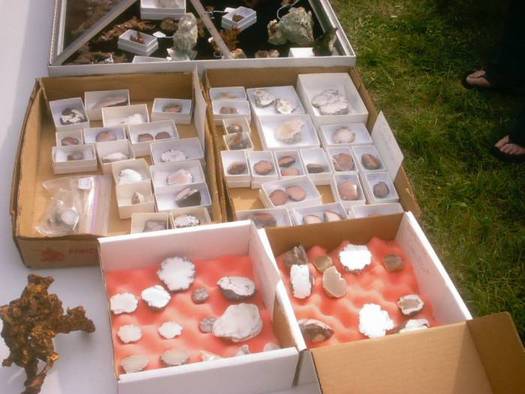
I ended up buying this Datolite pair from the Delaware Mine for my collection.
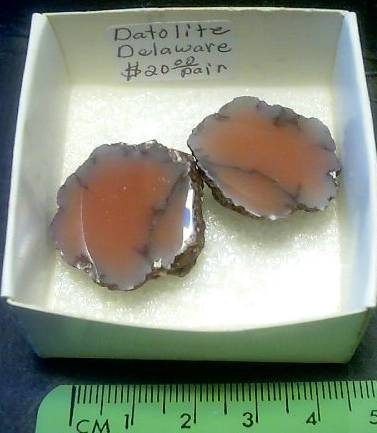
On the way back to camp I drove through Calumet to stock up on ice and get a Subway personal pizza for supper. Then I stopped by the side of highway 203 to get this panoramic view with Lake Superior in the background. In this spot the elevation quickly drops down, and down again to reach the lake level.

After eating, I took it easy and worked on this journal for the rest of the night.
Thursday August 10th
This morning I had to get an earlier start than usual and it's a good thing I did. The drive down to the Greenland/Mass City area and the Caledonia Mine was longer than I expected. I finally located the road to the Caledonia Mine, where I turned out to be very relieved to have brand new breaks on the van. It was a steep road paved with large rocks, and even at 5 miles per hour it was bumpy and could have been dangerous if you weren't careful. The guide for our underground tour of the Caledonia Mine, David Piotrowski was there in the drive checking people in as they arrived. After parking I met Richard Whiteman, owner/operator of the mine and we were given instructions on how to hook up our equipment. When it was time, the group assembled near the entrance to the Caledonia Mine.
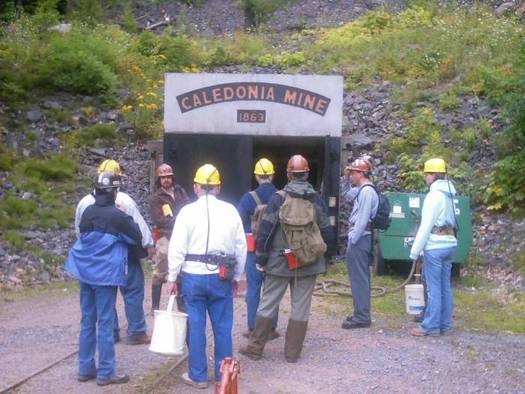
We were told ahead of time that there would be brown bats in the cave. In fact this cave system is a bat sanctuary, and a while back a census was done that estimated the population to be around 1/4 million. A bug eating army of the night! I've always liked bats, so this news only heightened my anticipation.
On our first leg of the tour, we entered the 1950s era Caledonia Mine, and David explained that the "stopes" are the mined out tunnels to the side. In this mine, unlike other local mines, the smart miners dug the stopes up at an angle to make it easier to drop the ore down into the waiting cars. All the while, the brown bats were flying past us, and over our shoulders, without making a sound. I managed to get one good picture of a bat in flight.
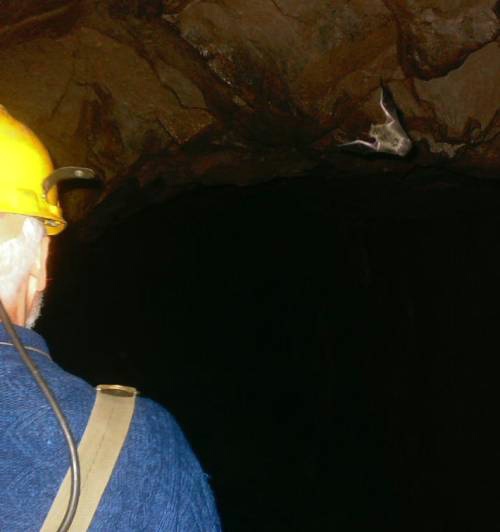
On this first part of the tour we were able collect what we could at a pile of recently blasted mine rock. I whittled down a rock with a nice Copper vein inside.

After a few minutes of collecting we were led back outside where we could put away our finds and get a drink of water. Soon we were led down the tunnel again, and at a fork we turned right towards the older sections of the mine. This next section was made in the 1930s, and the tunnel was more narrow and crudely cut. At one point David demonstrated the lighting situations that the old miners would have been working in by lighting a candle and having us turn out our lights. With one candle you could see David's face and barely make out the walls of the mine. He then said "If you were lucky, you would have a partner with you," and he lit another candle, which helped some, but not a lot. He then blew out the candles to demonstrate how in a pitch black mine, the eyes don't adjust so you can see. You really do need some source of light for the eyes to work.
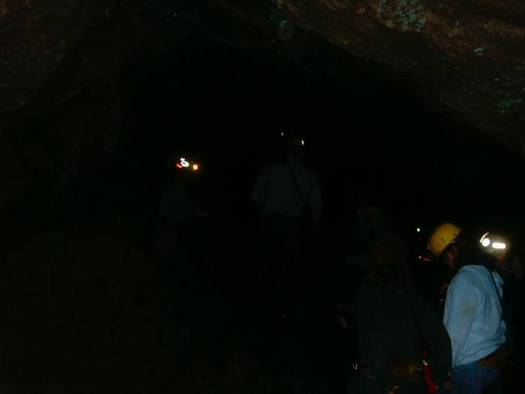
Our tour then moved on towards the Nebraska Mine which is connected to the Caledonia. This part of the Nebraska was dug in the 1880s, and it was almost like walking through a natural cave system. We were shown the "Ballroom", a larger area where years ago a huge Copper boulder of many tons was removed. As our tour ended we stepped out into the warm humid air, causing my glasses to fog up, and I got David to snap this picture of me. David showed us areas near the Nebraska entrance where prehistoric natives had pounded out the rock to mine Copper, leading to it's discovery here by Europeans.
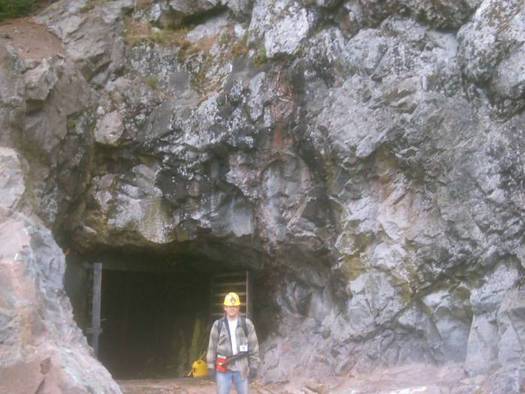
I thanked David for the great tour, a perfect finale for my version of the Copper Country Mineral Retreat. Before leaving, I got this panoramic view looking over the rock piles of the Caledonia to the hills behind.
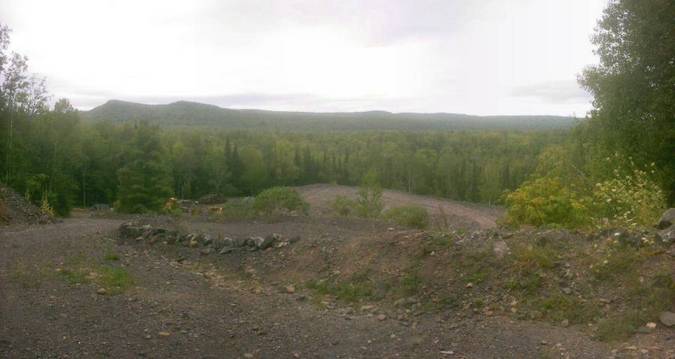
It is believed that this "mountain range" was once comparable to the Himalayas, but the glaciers scoured them low and exposed all this nice bedrock. Now it was time to make the 35ish mile drive back to Houghton for lunch, where I took this photo of the lift bridge between Houghton and Hancock.
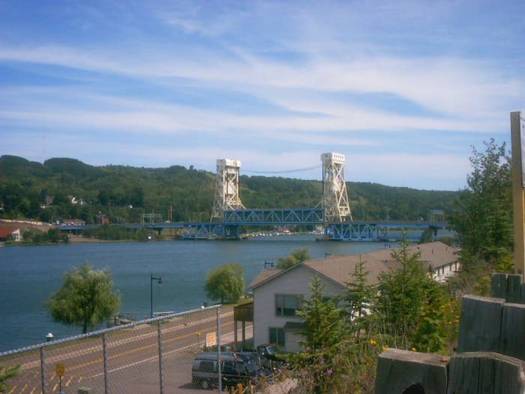
After that break I stopped one last time at the Seaman Museum to get George Robinson's book on the Mineralogy of Michigan, I also bought this nice little Azurite and Malachite specimen from Morocco.
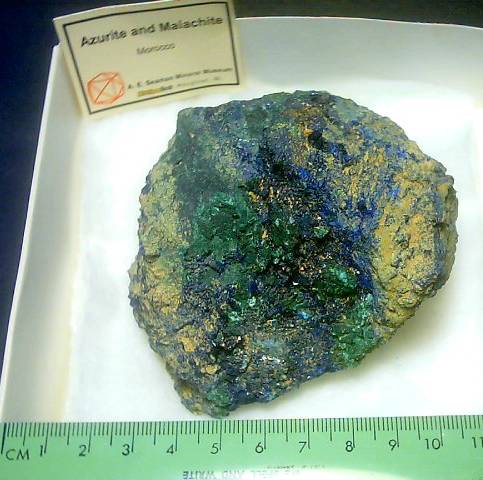
Then it was time to turn back toward home. I had dinner in Ishpeming, and drove to a campground in the southern central region of the UP to spend the night.
Friday morning I was up early and left for home. I stopped in St. Ignace for some delicious fudge; had my lunch at a rest stop on I-75; and was home by 1:30 or 2:00pm.
What a trip! It took a great deal of planning, and everything worked out in the end. Thanks to all the wonderful folks in the UP who made such an excursion possible, and I'm looking forward to a return journey.
Jim Adams
CLICK THE LITTLE MINER TO RETURN TO THE FIELD TRIP PAGE
